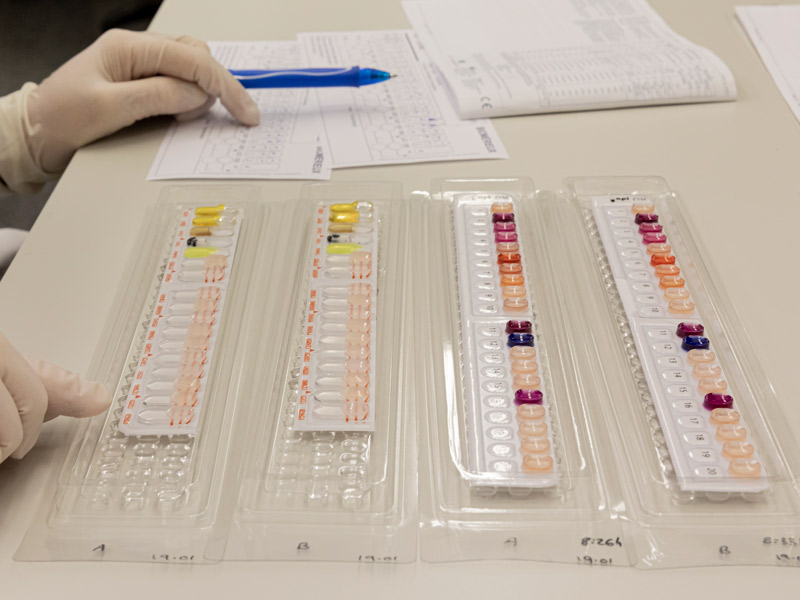
Microbial characterisation using several approaches.
The characterisation of a microbial strain can be approached in different ways, depending on the microorganism to be studied or the type of study to be carried out. The distinct characterisation techniques available in our catalogue are listed below:
Morphological characterisation of prokaryotes
Includes the study of the colonial morphology of the strain (homogeneity, size, shape, colour, opacity and texture of the colonies) and their observation under the microscope (cell shape and size, motility, etc.). CECT also includes the determination of Grad, catalase and oxidase for prokaryotic cells.
Cell morphology is studied by observation of a wet prep under the optical microscope from a young crop grown in plates or in broth. This observation makes it possible to determine not only the shape but also the size of the cells.
Colonial morphology is analysed by observation of triple streak seeding in the culture medium recommended for the strain.
The Gram value of the cells is obtained using the 3% KOH technique (Buck, 1982).
The catalase value is obtained using the 10 vol. hydrogen peroxide technique (Cowan and Steel, 1982).
The oxidase test is used to determine the presence of cytochrome C (Smibert and Krieg, 1994).
Morphological and physiological study (filamentous fungi)
This includes the study of the macroscopic and microscopic characteristics of the strain, after growth in different culture media, at different temperatures and after an incubation period of 7 days. The characteristics studied are:
- at the macroscopic level: colony diameter, texture, colour, production of pigment diffusible to the medium and production of exudate.
- at microscopic level: size and shape of conidia, conidiophores or other structures present on the strain.
Phenotypic characterisation using API strips
There are different galleries depending on the micro-organism to be studied:
- API 20E, for the identification of microorganisms belonging to the group of enterobacteria and other Gram-negative bacilli.
- API 20NE, for the identification of Gram-negative bacilli not belonging to the group of enterobacteria such as Pseudomonas, Acinetobacter, Flavobacterium, Moraxella, Vibrio, Aeromonas and others.
- API 20Aª, for the identification of anaerobic bacteria.
- API 50CH, for the metabolic study of carbohydrates and the identification of Bacillus (CHB), Lactobacillus (CHL) and Enterobacteriaceae (CHE).
- API Candida, for yeasts of clinical interest.
The assay is performed according to the manufacturer’s recommendations.
The report sent contains the biochemical profile obtained and the result generated by contrasting this profile with those existing in the Biomérieux database.
Note: as in any other identification system some isolates give rise to inconclusive results, which will be stated in the report as low discrimination, unreliable identification, doubtful profile or unacceptable profile.
Bacterial flagella staining
The presence of flagella in motile bacteria is analysed by staining cell suspensions with Ryu's dye (Heimbrook et al. 1989).
Genetic profiling
- RAPD technique (randomly amplified polymorphic DNA)
CECT staff have accumulated experience in the use of RAPDs for different microbial groups. - SSR technique (simple sequence repeat)
With the SSR technique, genetic profiles generated by PCR amplification of microsatellite regions are obtained. Microsatellite sequences are very abundant in the genomes of eukaryotes and some prokaryotes. They are short units of 1-6 base pairs (basic motifs), which are repeated in tandem a large number of items. Their frequency and type of repetition varies in the genomes of different species.
- Microbial characterisation
ISO 9001:2015
Access restricted to CECT personnel.
The user must send an active culture of each strain (triple streak seeded Petri dish in the case of prokaryotes and yeasts; slant agar tube is also accepted in the case of filamentous fungi).
Contact: bacterias@cect.org and hongos@cect.org












